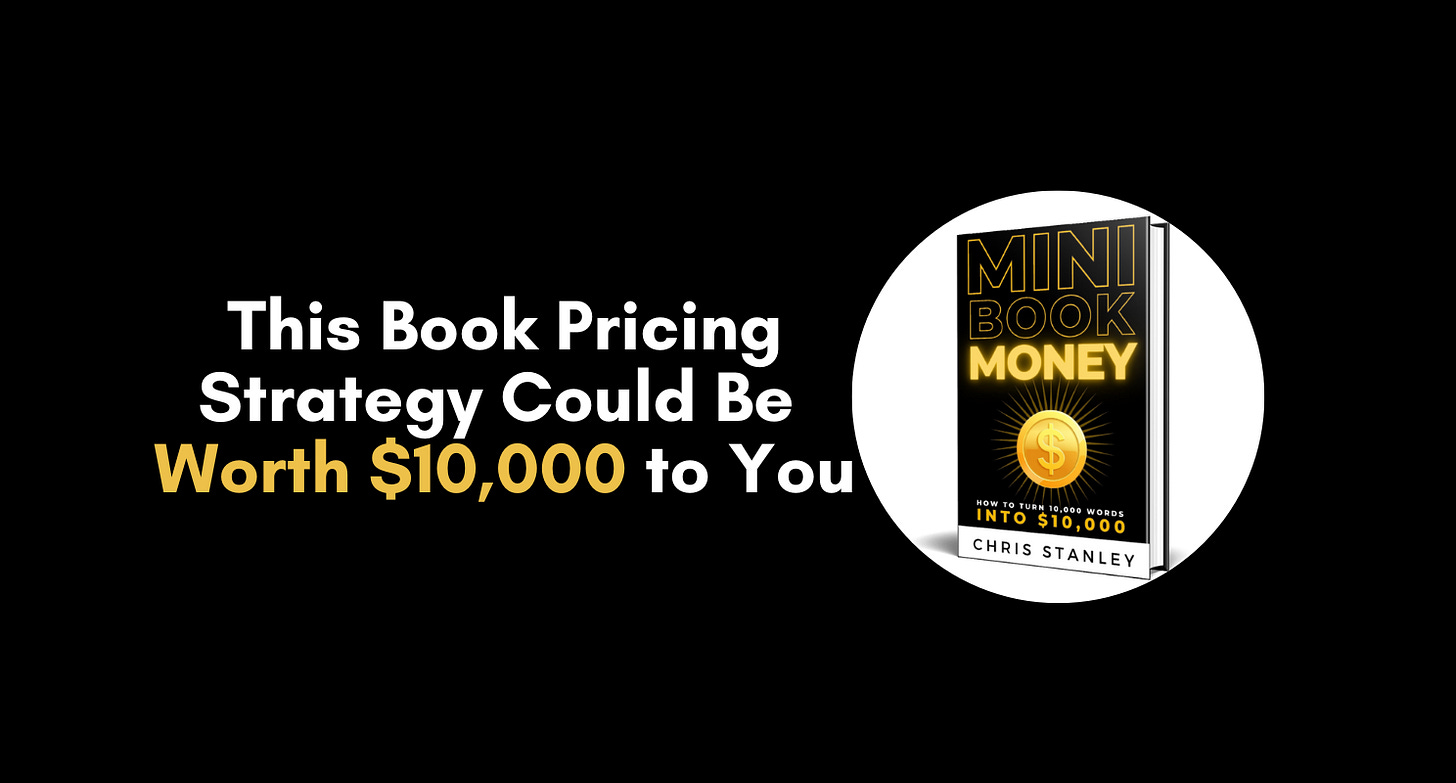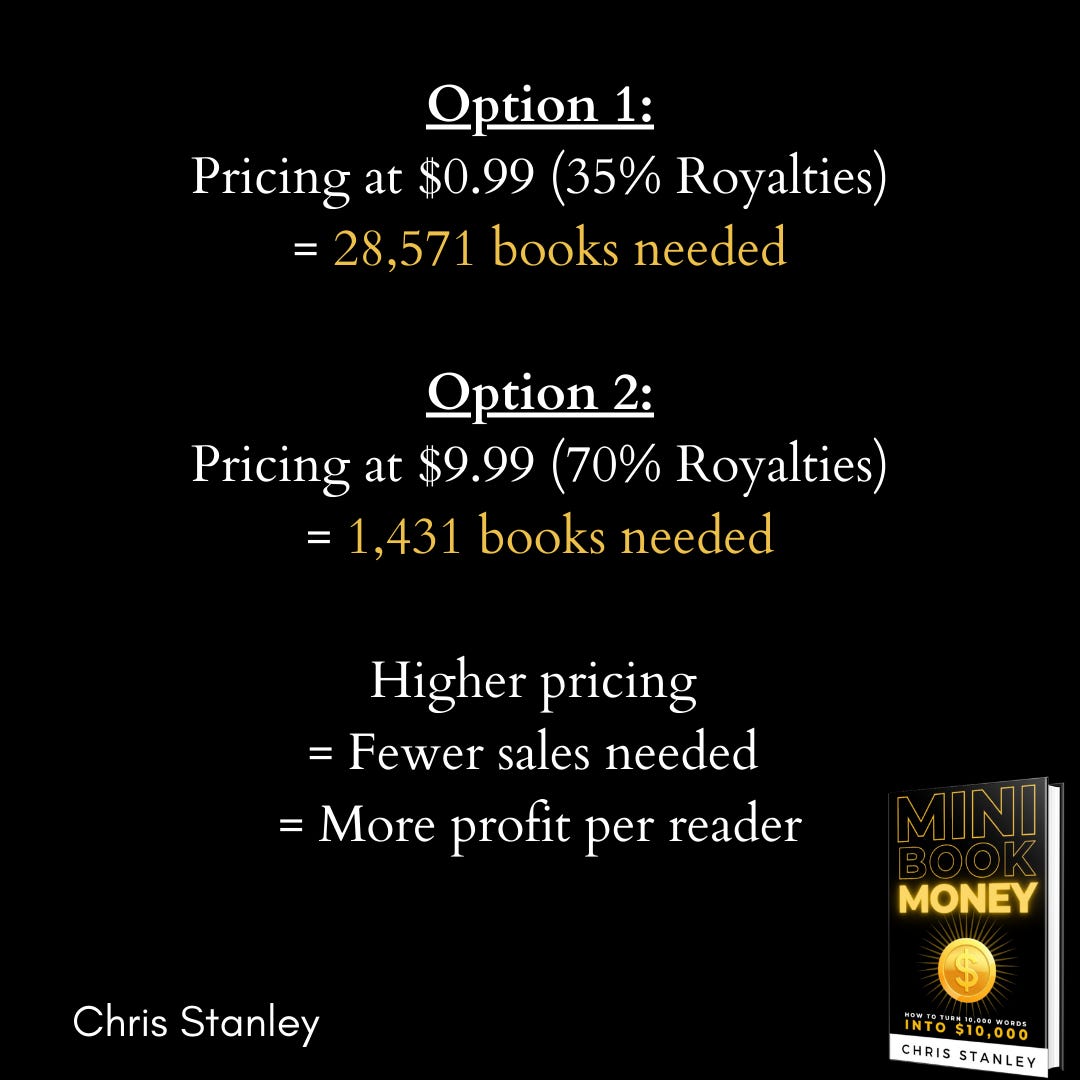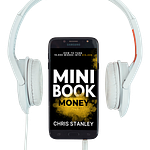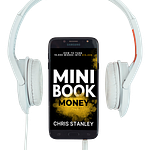Why Your Book is More Than Just a Book
Books are one of the fastest ways to establish credibility, build authority, and generate revenue.
Ebooks provide a low-barrier entry point for customers, making them an ideal first step into your world. But digital isn’t the only game. Physical books increase legitimacy, attract serious buyers, and boost revenue. With Amazon KDP and print-on-demand services, you can offer both digital and physical formats without holding inventory or managing logistics.
Many authors leave money on the table by ignoring paperback and hardcover editions.
How to Write a Mini Book in 7 Days
My top 3 most popular books (out of my 28) were written in less than a week.
You already have life experience and knowledge that can help others. Combine that with a 10,000-word manuscript, and you have a Mini Book. That Mini Book lays the foundation for a six-figure business.
Here’s how to get it done in seven days.
Day 1: Set the Foundation
Title, Subtitle, and Cover – Your title is your hook. Make it clear and compelling.
Power Promise – What transformation are you promising?
Outline Your Book – Choose a structure and fill in your key points.
The W’s Method – Turn questions into chapters.
Answer – Who, What, When, Where, Why, and How about your topic.
Each question becomes a chapter, making your book clear and structured.
Perfect for explaining concepts, frameworks, or industries.
The Sequential Method – Step-by-step simplicity.
Break down your process into a clear, logical sequence.
Each step is a chapter, plus any must-know info before they start.
Ideal for guides, how-to books, and systems that require execution.
The 10 Problems Method – Solve what matters most.
List the 10 biggest problems your audience faces.
Each chapter delivers the solution to one of those problems.
Great for coaches, consultants, and industry experts looking to showcase authority.
Add 3 Points Per Chapter & 3 Sub Points Per Point
Which outline method fits your book best? Pick one, and you’re already halfway there.
By the end of Day 1, you should have a working title, a strong promise, and a fully structured outline.
Days 2-6: Write 1,500 Words Per Day
Stick to 1,000-1,500 words per day to reach 10,000 words in a week.
Each day, write one full chapter, using:
The 3 Key Points per Chapter Method – Keeps content clear and digestible.
Sub-Points for Clarity – Stories, frameworks, and actionable takeaways.
If you follow this process, you will have a nearly complete draft by the end of Day 6.
Day 7: Finish & Polish
Complete missing sections and smooth transitions.
Light editing – Don’t aim for perfection. Focus on clarity and flow.
Use AI tools – Copy and paste one chapter at a time into ChatGPT for a quick spellcheck and basic editing.
Add a Lead Magnet – Ensure your book includes a call-to-action that leads readers to your next step (download, course, bonus, etc.).
At the end of Day 7, your book is written. Now, you can refine it, but the hardest part, writing, is done.
If you need more detailed breakdown on how to do these steps I wrote an entire mini book about my outlining and writing process called Mini Book Writing that'll walk you through every step of the writing process.
Publishing & Creating a Physical Book
Once your 10,000-word manuscript is ready, it takes less than an hour to publish it to Amazon.
When publishing through Amazon KDP, always create all available formats, ebook, paperback, and hardback, to maximize revenue.
The paperback and hardback versions are simple to set up. KDP allows you to copy over your digital details, upload a different size cover, and in minutes, your physical edition is ready for review.
Pro Move: Choose categories where the #1 book sells fewer than 20 copies per day. If you can reach Amazon Best-Seller status, promoting your book becomes 10X easier.
If you need help with the details of publishing your book to Amazon's KDP you can grab my book, Mini Book Publishing which has screenshots and step by step instructions for the entire process.
Pricing – $10k MINI BOOK PLAN
Most authors price their books too low and wonder why they never make money.
If you want to hit $10K from a single book, you need to price it inside Amazon’s sweet spot where you get maximum royalties and premium buyers.
If you price too low, you’ll need thousands of sales to hit that number. But when you price strategically, a fraction of that gets you there.
THE 3-TIER AMAZON PRICING STRATEGY
1. LOW-TICKET ($0 - $2.99) – LEAD GENERATION
Best for: Getting new buyers in the door and building an audience.
Ebook: Free - $2.99 (great for Kindle promotions).
Paperback: $4.99 - $9.99 (impulse buy pricing).
Why it works: This strategy helps boost Amazon visibility and reviews, but it won’t generate real revenue alone.
2. MID-TICKET ($3.99 - $9.99 for ebooks, $9.99 - $14.99 for paperbacks) – AUTHORITY BUILDER
Best for: Balancing sales volume and profit.
Ebook: $3.99 - $9.99 (Amazon’s highest 70% royalty rate).
Paperback: $9.99 - $14.99 (optimal pricing for nonfiction buyers).
Why it works: Keeps the book affordable while still bringing in solid revenue.
3. HIGH-TICKET ($9.99+ for ebooks, $15.99 - $99.99 for paperbacks) – PREMIUM NICHE PLAY
Best for: Manuals, industry-specific books, and premium knowledge.
Ebook: $9.99 (Amazon’s cap for 70% royalties).
Paperback: $15.99 - $99.99 (higher perceived value).
Why it works: Pricing higher attracts serious buyers and positions your book as a must-have resource, not just another cheap read.
HOW I MADE $14,000 FROM ONE BOOK ON AMAZON
When I wrote The Auto Adjuster's Playbook, I didn’t just throw another book on Amazon and hope it sold.
I built it as a manual for my students, the exact information they needed when they were on the job and didn’t have access to me. This information many had to spend thousands of dollars to learn inside of our coaching program.
Because I knew this book had tremendous value, I priced it at a premium:
Ebook: $9.99 (highest price for Amazon’s 70% royalty).
Paperback: $24.99 (priced as a serious, must-have resource).
Over five years, that one book made me $14,000+ in passive royalties.
That’s just from book sales. The real money came from students who read it and then signed up for my coaching and courses.
This is why pricing strategically matters. If I had priced it at $0.99 for the ebook, I would have needed 10X the sales to make the same amount.
THE 1,000 SALES PLAN – HOW TO PREDICTABLY EARN $10K+
Hitting $10K+ from one book is just math. (numbers are for physical books)
1,000 copies at $9.99 = $10,000+
500 copies at $19.99 = $10,000
250 copies at $39.99 = $10,000
Higher pricing means you need fewer buyers to hit your revenue goal.
If you sell to a niche audience first, you don’t need huge volume to make real money.
WHY THIS WORKS & WHAT THIS MEANS FOR YOU
Most authors think of a book as the product.
Revenue Writers see books as an engine for wealth.
Pricing high tells buyers this book is valuable. If you sell a book for $0.99, people assume it’s not worth much. But when it’s priced at $9.99+? It becomes a real asset. When you step onto the Revenue Track with your Mini Book, you’re not just another author, you’re an authority. A higher price isn’t just about making more money per sale, it’s about positioning you as the go-to expert in your field.
Your book becomes part of your business strategy.
Instead of treating your book as a one-time sale, position it as a lead-in to bigger opportunities.
Also, Amazon punishes low pricing.
If your ebook is priced below $2.99, Amazon only pays you 35% royalties, meaning a $0.99 book earns you just $0.35 per sale. To hit $10,000, you’d need to sell a staggering 28,571 copies. But if you price at $9.99, Amazon pays you 70% royalties ($6.99 per sale) and now you only need 1,431 buyers to reach the same $10K.
Fewer sales, more profit, smarter strategy.
If you follow this, your book won’t just make $10K+ in royalties, but your mini book will become a revenue-generating asset.
Now, if you want a faster path to $10k, let’s talk about models that take less time but still generate serious revenue.
Let’s keep going.














